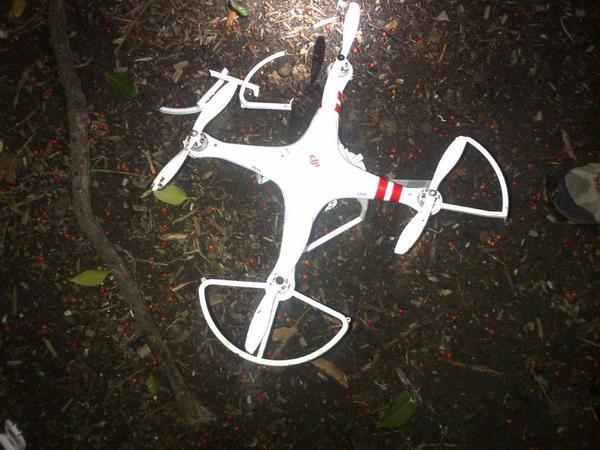by Benson Agoha | Technology Comment
As light overhead flying crafts, also called Drones have almost become the latest must-have toy, our writer wonders if it has become a blessing or a Course?
As in the above photo, taken in Royal Arsenal in September, 2014, when two licensed technocrats were trialing drones which flew up to 100 metres above the Thames and traveled a further 20 metres filming the Clipper Ferry service as it sailed out to the City, many parts of London have witnessed a surge in the number of drone testing in various neighbourhoods.
Drones still have not received blanket ticket to be used for all kinds of exciting activities, as our minds may roam, because government regulators still ensure that only approved companies are licensed to test-fly drones, let alone own them. And there are further limitations.
The engineers in the above photo told Woolwich Online, they were not allowed to use test-fly drones or to film at such places that attract large gatherings of people. That is, places including party venues are forbidden, and no overhead coverage in open streets are permitted. Test-flying drones through peoples back gardens and stuff like that, are also not allowed. Safety comes first.
And there has been questions of misuse. Drones have already been noticed as subject to easy abuse. Abuses like that which crashed midway, only for it to be discovered to have been stuffed with heroine only served to bring trouble to credible companies, like Amazon and Google.
Then, when one drone crashed into the lawn of the White House (below), Pentagon knew it was time something was done. Finally it is, and although not all the changes are bad, analysts believe that this new development sends the right signal and a strong message that someone is watching and saying this new piece of technology is not subject to abuse.
As the US Aviation Regulator put together a draft proposal of new rules for commercial drone flights last week, more allowance have reportedly been made, even as further restrictions are imposed.
Regulators are therefore saying, while we do not wish to be on the way of technological development, we are not allowing this new technology, exciting as it is, if it is going to be abused. It is as if the drone is a piece of skateboard.

No doubt, changes will continue to be made at regular intervals, as more revelations emerge from the adoption of the new technology.
Since the trials in various places, technocrats and business executive had let fly their imagination of the several uses to which drones could be put. These included:
1) Package Delivery: which companies like Amazon and Google relished, but which ran the risk of abuse from miscreants and unlawful people.
2) They are to easy to abuse. The fact that there is as yet, no air-police to monitor drone flights means that people can think out ways to get around the risk associated with movement of things drones. Example was the drone that reportedly crash-landed half way from its destination. It had several packages of hard drugs.
3) Inspection of pipelines, especially those extending into hard-to-reach areas, including the high seas.
4) Aerial coverage or filming of live activities at times like carnivals,festivals, parties, or games like football and etc. Attractive and helpful under these circumstances as they maybe, there exists high risks.
5) Risks of hacking has also been mentioned. Some believe that, being an artificial intelligence, light drones can be hacked and under such circumstances, reprogrammed through brain surgery.
6) Risk of hi-jack. This is associated with the one above. The concern is that, if drones can can be hacked, they can be hi-jacked too.
7) Diversion: if they can be hi-jacked, they can be diverted to a different destination. The concern is that, even in ancient times when pigeons were used as errant birds, some of them were hunted, messages retrieved and read, and different ones sent out instead. these may not be easy, but they actually happened. It was, even as then, a question of imagination, as it is now.
And, if drug dealers can embrace and adapt to a new transport technology, that for all we know remained largely under trial, imagine what several other men of lesser morals will do when everybody is free to own the new toy. This urges us to relate to why, perhaps, regulators may not allow its availability, at least not as we might have hoped.
















































































































































































No comments:
Post a Comment